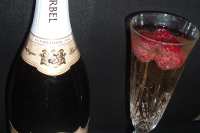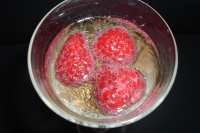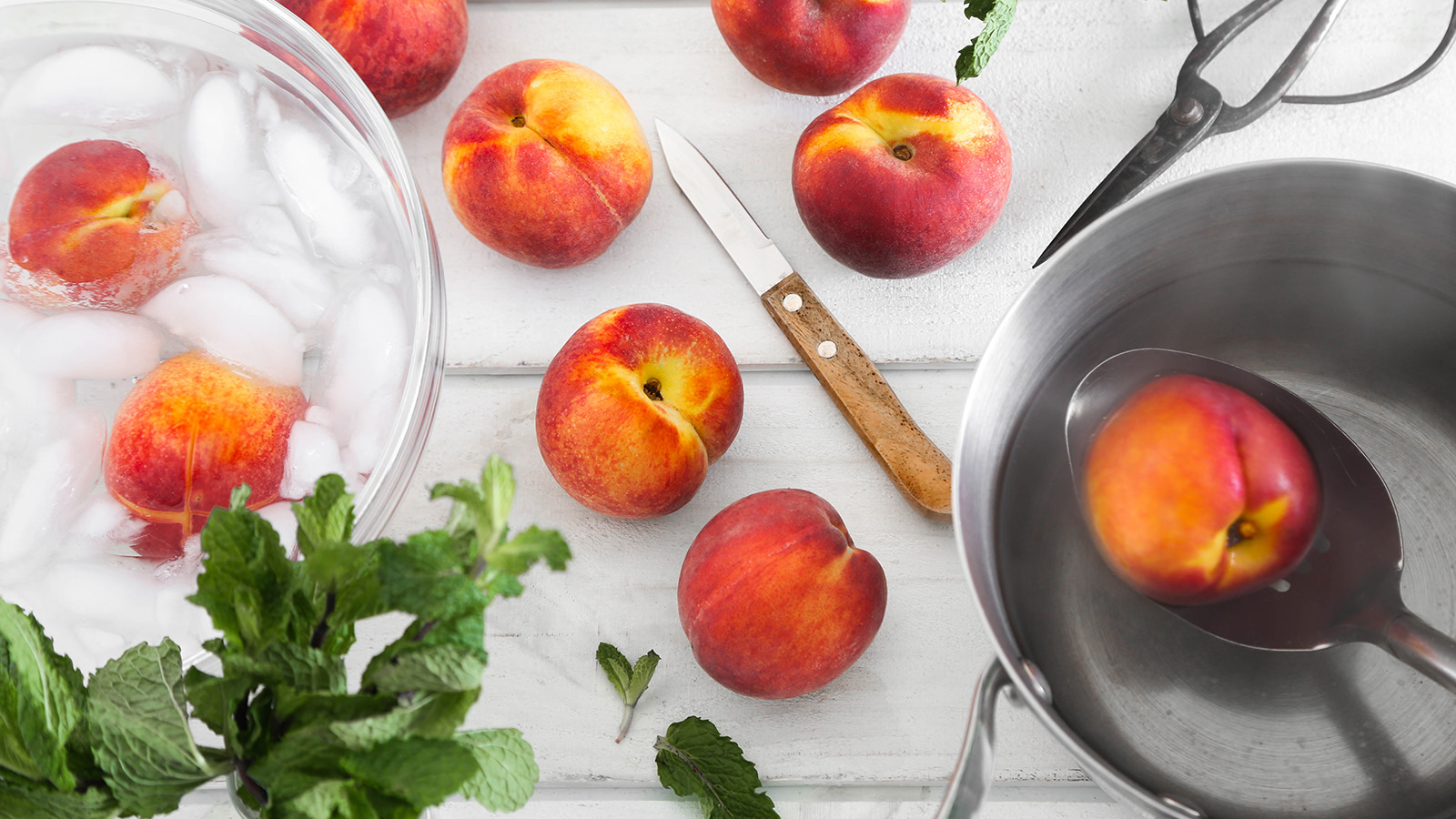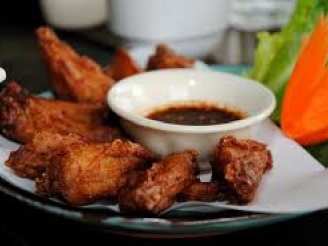Champagne 101

photo by DeliciousAsItLooks





- Ready In:
- 2mins
- Ingredients:
- 5
- Serves:
-
4-6
ingredients
- 1 (750 ml) bottle champagne
- fresh raspberry
- fresh peach slices
- apricot nectar or peach nectar
- orange juice
directions
- Vintage vs. Non-Vintage Champagne: All Champagnes are made from grapes grown in France's northeastern region, the Champagne province. Most Champagnes are non-vintage: that is, they are made from a blend of grapes from different years, aged in the bottle for 18 months. Vintage Champagne is made with high-quality grapes from the same year; they must be aged three years before they are released.
-
Champagnes from Dry to Sweet: In addition to classifying Champagne as vintage or non-vintage, 6 classifications are used to refer directly to the Champagne's sweetness:
- Brut: dry, less than 1.5% sugar.
- Extra Sec: extra dry, 1.2 to 2% sugar.
- Sec: medium sweet, 1.7 to 3.5% sugar.
- Demi-Sec: sweet, 3.3 to 5% sugar (Served as a dessert champagne).
- Doux: very sweet, over 5% sugar (Served as a dessert champagne).
- Other Wines with Bubbles: Sparkling wines made by the same process can't be called Champagne unless they're made in their namesake French region. Chardonnay and pinot noir grapes are the main varieties used to make Champagne, and they're grown all over the world; many regions produce fine sparkling wines that are somewhat less expensive and more widely available than French Champagne. Italian Prosecco and Asti, Spanish Cava and German Sekt are all delicious varieties of sparkling wine.
- As a side note: the small clusters of grapes sold in the supermarket as "champagne grapes" are just using the cachet of the name: they're actually fresh zante currants.
- Serving Champagne: Chill the wine in the coldest part of your refrigerator. Open the bottle by twisting off the wire cage over the cork, keeping your thumb over the cork. Keep the bottle at an angle, with the cork pointing away from you. Grasp the neck of the bottle with a dry cloth; with your thumb over the cork, gently twist the bottle. You should feel the cork easing itself loose. Don't go for the dramatic pop: removing the cork should be almost soundless.
- Serve Champagne in clean, dry flutes--narrow glasses with tall sides--which show off the color and the fine bubbles while keeping the carbonation from dissipating. "Prime" the glasses by pouring a small amount of wine into the bottom of each glass, letting the foam subside before filling them fully.
Questions & Replies
Got a question?
Share it with the community!
RECIPE SUBMITTED BY
~WELCOME TO MY PAGE~
This page is dedicated to my Dad, who I love & miss each and every day! 3-12-29 to 1-22-10
My name is Star and I am originally from Rhode Island. I have been married for 20 years to my wonderful husband, Phil. We live in the Sierra Nevada foothills of Northern CA. I love cooking, eating a variety of foods and drinking wine (in moderation , of course)! There's nothing better than a wonderful meal! In Northern CA there is an abundance of fresh ingredients year round as well as wonderful wines! We have been fortunate enough to travel and experience wonderful cuisine, but I miss all the ethnic foods I grew up with. I love to cook and try new recipes.
Being the daughter of 2 caterers, food has always been a big part of my families' life. Some of the best memories I have are of family gatherings around the kitchen table or counter. The kitchen was and truly is the "heart of the home"!
Back East we enjoy food for passings, celebrations, comfort or everyday life. Menus are varied according to the holidays at hand. Portuguese for Labor Day, Italian for St. Joseph's Day, Irish for St. Patrick's Day, Polish for Easter and the list goes on. Tradition has deep roots in the East and "Food: "is" The Way To Everyone's Heart"!
<a href="http://photobucket.com" target="_blank"><img src="http://i168.photobucket.com/albums/u187/starryrose1956/hot_wieners.jpg" border="0" alt="Photo Sharing and Video Hosting at Photobucket"></a>
"R.I. Hot Weiners"!
<a href="http://photobucket.com" target="_blank"><img src="http://i168.photobucket.com/albums/u187/starryrose1956/464278453_35fef08a4equahog.jpg" border="0" alt="Photo Sharing and Video Hosting at Photobucket"></a>
"Quahog"
<a href="http://photobucket.com" target="_blank"><img src="http://i168.photobucket.com/albums/u187/starryrose1956/clamcakes.jpg" border="0" alt="Photo Sharing and Video Hosting at Photobucket"></a>
"Clam Cakes"
<a href="http://photobucket.com" target="_blank"><img src="http://i168.photobucket.com/albums/u187/starryrose1956/SamsNewEnglandClambake101606.jpg" border="0" alt="Photo Sharing and Video Hosting at Photobucket"></a>
"New England Shore Dinner"
<a href="http://photobucket.com" target="_blank"><img src="http://i168.photobucket.com/albums/u187/starryrose1956/chourice.jpg" border="0" alt="Photo Sharing and Video Hosting at Photobucket"></a>
"Portuguese Sausage"








